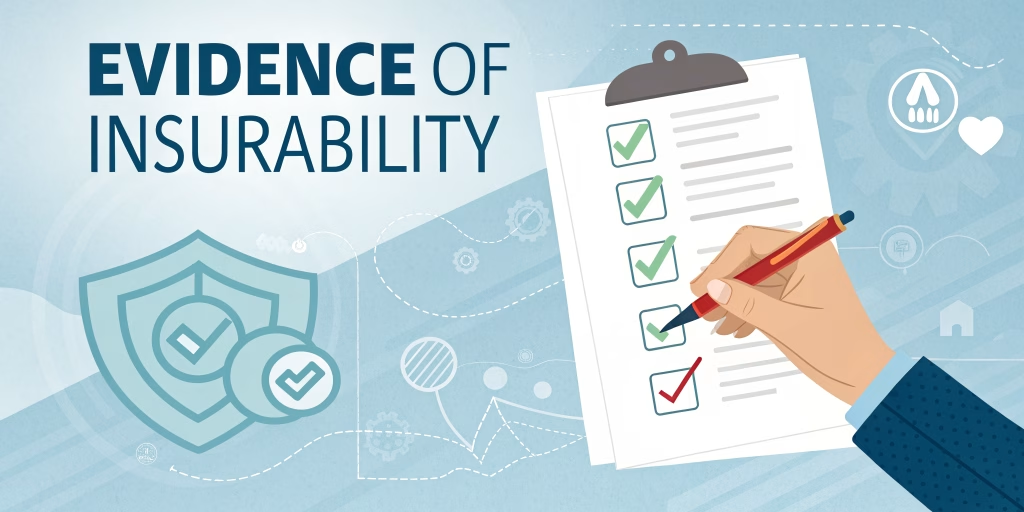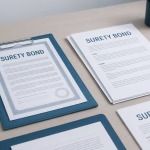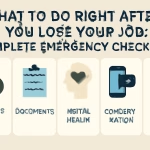Evidence of Insurability is simple proof you are healthy enough for insurance. By gathering easy documents—doctor’s notes, health forms, and sometimes income papers—you speed up approval and can get better rates.
Insurance companies ask for proof of health. This proof is called Evidence of Insurability (EOI). It sounds big, but it is easy. EOI is like a school report card. It shows your health status.
If you want life, disability, or extra insurance, you may need EOI. This guide explains:
- What EOI means
- Why insurers ask for it
- How to get your papers ready
- How to send them in
You will learn every step. Then you can feel sure and calm when you apply.
What “Proof of Health” Means
Proof of health is a set of papers. These papers show you are in good shape. They tell the company you can be insured safely.
Imagine you join a club. The club asks for your grades. Good grades let you in. Insurance asks for health facts. Good health facts let you get a plan.
Key Papers You Need
- Doctor’s Notes
- A note from your doctor that says you are fit.
- It may list recent tests like blood work or X-rays.
- Health Forms
- A short form that asks if you smoke, drink, or work out.
- Answer each question honestly.
- Income Papers (Sometimes)
- A pay stub or tax form if you apply for a large plan.
- This helps show you can pay premiums.
- A pay stub or tax form if you apply for a large plan.
Why Insurers Ask for EOI
Insurance is about risk. Companies want to know if you are low or high risk. EOI gives them facts to make fair choices.
- Better Facts, Better Rates:
Clear health papers make you look low risk. Low risk can mean lower premiums. - Faster Approval:
When you send all papers at once, the company can decide quickly. You avoid long waits. - Fair Deals:
Companies treat everyone the same by using clear rules. They look at age, health history, and habits.
Types of Insurance That Use EOI
You may meet EOI needs for these plans:
- Life Insurance
Big health facts for big coverage. - Disability Insurance
Proof you can work safely. - Supplemental Insurance
Extra help for things like hospital stays or critical illness.
How to Gather Your Papers
Step 1: Make a List
Ask your insurer what they need. They often give a list of papers.
Step 2: Get Doctor’s Notes
Call your doctor’s office. Ask for recent health reports and test results.
Step 3: Fill Out Health Forms
Use simple, clear answers. Check each question.
Step 4: Collect Income Papers
If asked, print pay stubs or tax returns.
Step 5: Organize Your Folder
Keep digital copies in a folder on your computer or phone. If you use paper, keep them in a real folder.
How to Send Your EOI
- Online Portal
- Many insurers have websites.
- Upload your files there.
- Mail
- If you mail, use a trackable service.
- Always keep a copy for yourself.
- Confirm Receipt
- Call or email to check they got everything.
- Call or email to check they got everything.
Tips for a Smooth Process
- Start Early:
Give yourself time. Don’t wait until the last minute. - Stay Honest:
Always tell the truth. Missing or wrong info can delay you. - Keep Copies:
Save a backup of every file you send. - Ask Questions:
If you’re not sure, call your agent.
What Insurers Look At
When your papers arrive, insurers use simple rules:
- Age: Younger people often pay less.
- Medical History: Past surgeries or conditions matter.
- Lifestyle: Smoking or heavy drinking can raise rates.
- Income (for Big Plans): Shows you can pay premiums.
If your papers are clear, you are low risk. This means lower premiums and fast approval.
Real-Life Examples
- Fast Approval:
Sarah had her doctor send recent test results. She filled forms in one day. Her plan was approved in a week with low rates. - Delay and Higher Cost:
John waited to send his reports. The insurer asked more questions. He paid higher premiums for a few months until he sent full info.
These examples show how proof of health matters.
Final Thoughts
Proof of health—Evidence of Insurability—is simple. It is your medical notes, health forms, and sometimes income papers. It works like a school report card to show you are in good shape.
By gathering these papers, you help the insurer see you as low risk. You get lower rates and faster approval. A little prep goes a long way.
Think of it like studying for a test. If you study well, you do better. If you prepare your EOI well, you get a better deal.
Stay organised, start early, and ask for help if you need it. Good proof today brings peace of mind tomorrow.
Common Questions
Q1. What if I miss a paper?
A: Call your agent. They can help get the missing file or give you a temporary approval.
Q2. How long does it take?
A: Once all papers are in, most people hear back in 10–14 days.
Can I add papers later?
A: Yes. If your health gets better or you find new tests, you can update your file for better rates.





